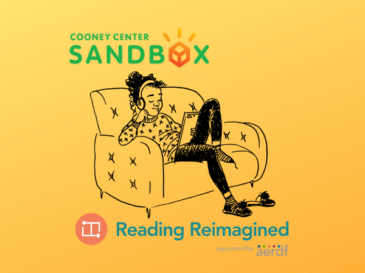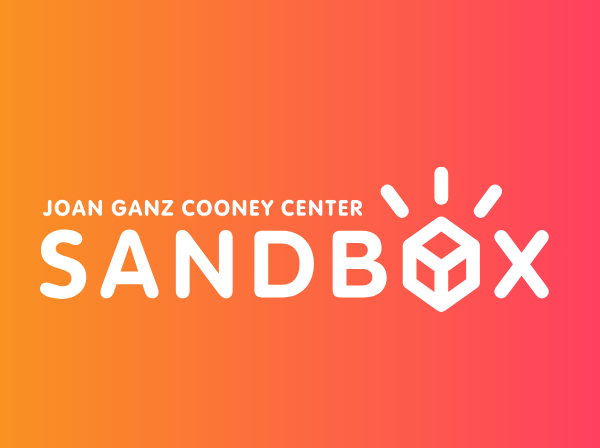
According to NAEP only 14% of U.S. students reported reading for fun almost every day in 2023 – 13 percentage points lower than 2012 – and average reading scores have declined for most sub-groups of 8th graders since 2020. Tackling this crisis in reading requires a multi-pronged approach to understand and address the challenges. The Advanced Education Research & Development Fund (AERDF) initiative Reading Reimagined has embarked on this work, in particular through funding research on how older children (ages 9-13) can build their fundamental skills and overcome the decoding threshold.
At the same time, it is critical to consider the whole child and the way that emotions and past experiences with reading could potentially impact children’s motivation to continue trying to learn and improve.
“Traditional research and development has too long omitted our students. Our approach to Inclusive R&D includes them as critical partners. As we build tech-enabled literacy tools for students of all ages, we aim to include kids in every step of the journey. Cooney has been a foundational partner to help us understand how to best do that and leverage their opinions and expertise.”
—Rebecca Kockler, Executive Director of Reading Reimagined
With the Cooney Center Sandbox initiative, we use evidence-based cooperative inquiry approaches to work with youth directly on edtech product ideation to gather their input and feedback.1 As one of our participants, Ella, age 10, stated on why designers need to talk to kids, “The adults don’t have kid minds. They might think they do…They are just saying, like, I’m a child at heart, so I can do this.”
In partnership with Reading Reimagined and a group of tweens, the Cooney Center engaged in design activities to answer questions such as, “What should the product experience be so that tweens find it motivating, confidence-building, and interesting? What features should it include? What would make it more/less frustrating?” We organized co-design sessions with 11 children ages 9-13 from diverse geographic locations and backgrounds (five Black, three white, two Latinx, and one Asian). They had been identified as reluctant readers by their parents who provided notes such as:
- “She loves to be read to but struggles with reading on her own. Her reading level is below her grade level but her cognitive level is high making it very difficult to find engaging books at the reading level [and] making her frustrated.” (Parent of Ella, F, age 10)
- “He does not enjoy reading and feels like he is behind his other classmates, which impacts his anxiety and eagerness to read.” (Parent of Alex, M, age 11)
- “When reading, she can sound out words and reads most words, but towards the end of the sentence she loses fluency. Other times she rushes through the reading and skips words. She prefers comic-style books.” (Parent of Zara, F, age 9)
- “He resists reading at all costs. I remember when he was little, other kids would go to bed reading, and he would go to bed reading books of basketball statistics. (He loves math and numbers.) Part of this is a lack of desire to sit still, and part of it is that no one has given him a satisfactory reason to believe that reading is valuable. Especially now, with Chat GPT, he seems to think he will never have to read or write on his own.” (Parent of Mason, M, age 13)
Four adult researchers met with the youth online over two evenings with each session structured around two co-design activities honed for online use.2
The design activities asked children to create digital scrapbooks about what’s “fun” or “boring,” and how those activities intersect with reading. Children also analyzed existing reading apps for “likes, dislikes and design ideas” before embarking on creating their own visions for a reading app that included interesting storylines, reward mechanisms, and features that would engage and support kids who don’t like to read.
Barriers to reading and design themes that kids want to see
The co-design methods created space for thoughtful conversations, through which the children shared many challenges and barriers to reading, including having to sit still and focus, experiencing stress during reading, and frustration with the choices they’re provided and the time investment that reading requires.
- “I’m a pretty slow reader, so I don’t feel like the time that I put into it is equal to what I’m going to get out.” – Mason, 13
- “If you’re a slow reader, there should be a button to make it [scrolling text] slow so you’re not stressed out.” – Alex, 11
In terms of boosting children’s motivation for reading, kids shared several elements that they would like to see, including dynamic, interesting content. Some wanted stories with adventure or that incorporated surprising, random, or weird elements. Older learners also want ways to “swap out” content that is not interesting to them. Another area of discussion was how music can be motivating and make it easier to focus. Having options for focus supports may also provide learners with the agency to use what works best for them.
A major theme of our conversations was the stress and anxiety that reading can cause, from feeling overwhelmed by “big words,” the amount of text, or feeling behind classmates. The kids felt it was important for an intervention or app to break the tension they feel around reading – this could be by providing calming options or providing relief through humor. As mentioned, music can be a way to support focus, mood, and mindfulness.
The children also had ideas about how to create more inclusive digital spaces for them and their peers. When discussing avatars, they noted that there should be non-binary gender options. One child also noted that she wanted a game to be “dyslexia-friendly,” explaining that, for example, the instructions for the game can be read aloud so that everyone is on the same page about how it works and can enjoy the experience more. Other participants who did not mention that they had dyslexia also endorsed “read-aloud” options that would help to address stress, anxiety, or other learner variability.3
Overall, the children are looking for engaging experiences that are inclusive, adjustable, and address social-emotional as well as academic needs. The Reading Reimagined team at AERDF is using this feedback to create design specifications for a forthcoming educational technology to support older students’ literacy.
Learn more about project highlights here.
1 Druin, A. (2002). The role of children in the design of new technology. Behaviour and Information Technology, 21(1), 1-25.
2Fails, J. A., kumar Ratakonda, D., Koren, N., Elsayed-Ali, S., Bonsignore, E., & Yip, J. (2022). Pushing boundaries of co-design by going online: Lessons learned and reflections from three perspectives. International Journal of Child-Computer Interaction, 33, 100476.
3 Tare, M., Shell, A. R., & Jackson, S. R. (2022). Student engagement with evidence-based supports for literacy on a digital platform. Journal of Research on Technology in Education, 54(2), 177-187.

